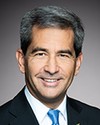Thank you, Mr. Chair.
Madam Lieutenant-General Whitecross and Madam Rear-Admiral Bennett, we are talking about behaviour and environment, but what are the primary causes of actual cases of harassment or assault?
I was a member of the Canadian Forces for more than 20 years, and I was unit commander. So I had to manage such problems at the time. I began to serve at the end of the 1980s, during the transition. The Canadian Charter of Rights and Freedoms was implemented more actively and women were integrated into combat zones. At the time, this was a man's world, but they then had to deal with the presence of women in the infantry, the artillery, and combat zones. This created a change of culture.
Is there an increase in the number of assault cases today? If so, is there a link between that increase and the behaviour and culture of young people today, who live in a society that is more permissive than it was at that time?
I would also like to know whether the imposition of discipline in the Canadian Forces has changed. At a certain point, members of the military could not do anything out of line without the imposition of very strict disciplinary measures. Has discipline changed? Are NCOs less strict today toward military members, an attitude which could lead to bad behaviour?

